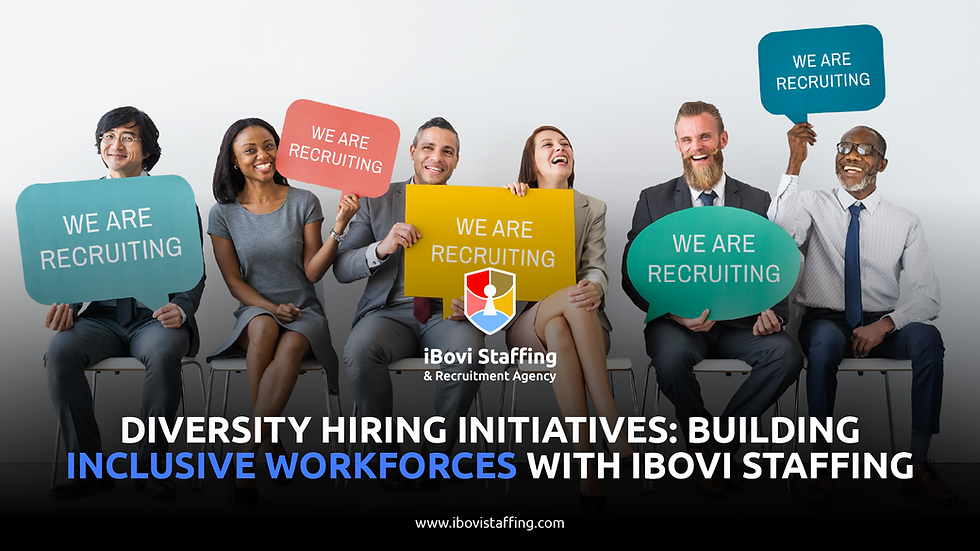The Ultimate Guide to Recruitment Chatbots: Revolutionizing Talent Acquisition
- Arnim Sharma

- Aug 10, 2024
- 6 min read
Updated: Feb 26
Table of Contents:
Introduction
In the rapidly evolving landscape of talent acquisition, recruitment chatbots have emerged as game-changers. These AI-powered tools streamline the hiring process, offering efficiency, engagement, and scalability.
But what exactly is a recruitment chatbot, and how can it benefit your company? This comprehensive guide will explore everything you need to know about recruitment chatbots, from their benefits to practical examples, and even how to create one for your organization.
What is a Recruitment Chatbot?
A recruitment chatbot is an AI-driven tool designed to automate various aspects of the recruitment process. These chatbots can engage with candidates, screen resumes, answer common queries, and even schedule interviews. By leveraging natural language processing (NLP) and machine learning algorithms, recruitment chatbots can simulate human-like interactions, making the hiring process more efficient and less resource-intensive.
Key Features of Recruitment Chatbots:
Automated Candidate Screening
24/7 Availability
Data-Driven Insights
Seamless Integration with ATS (Applicant Tracking Systems)
Best Chatbots for Recruiting
Choosing the right chatbot for your recruitment needs can be challenging, given the plethora of options available. Here are some of the best chatbots for recruiting that have made a significant impact on the industry:
1. Mya
Overview: Mya is known for its advanced NLP capabilities, making it ideal for engaging with candidates and providing real-time responses.
Key Features: Automated candidate outreach, multilingual support, seamless ATS integration.
2. XOR
Overview: XOR is a versatile recruitment chatbot designed to handle everything from initial screening to interview scheduling.
Key Features: Automated candidate engagement, AI-driven analytics, multilingual capabilities.
3. Paradox (Olivia)
Overview: Olivia by Paradox is a popular choice for companies looking for an AI assistant to streamline their recruitment process.
Key Features: Candidate pre-screening, interview scheduling, real-time engagement.
4. HireVue
Overview: HireVue combines AI with video interviewing, offering a comprehensive solution for modern recruitment.
Key Features: AI-driven candidate assessments, video interviewing, analytics dashboard.
Companies Using Chatbots in Recruitment
Many leading companies have adopted recruitment chatbots to enhance their hiring processes. Here are a few examples:
1. Unilever
Implementation: Unilever uses recruitment chatbots to screen candidates and schedule interviews, significantly reducing time-to-hire.
Outcome: The chatbot helped Unilever process over 250,000 applicants annually, with a 90% completion rate in the initial screening phase.
2. L'Oréal
Implementation: L'Oréal's chatbot, Mya, engages with candidates, answers their questions, and guides them through the application process.
Outcome: L'Oréal has seen a 33% increase in candidate engagement since implementing Mya.
3. Vodafone
Implementation: Vodafone uses a chatbot to automate the screening and interview scheduling processes.
Outcome: The company reduced its recruitment time by 50% and improved the candidate experience.
Benefits of Using a Recruitment Chatbot
The advantages of integrating a recruitment chatbot into your hiring process are numerous:
1. Increased Efficiency
Recruitment chatbots can handle repetitive tasks such as answering FAQs, screening resumes, and scheduling interviews, freeing up time for HR professionals to focus on more strategic activities.
2. Improved Candidate Experience
Chatbots provide instant responses, ensuring candidates remain engaged throughout the hiring process.
3. Cost-Effective
Automating parts of the recruitment process reduces the need for additional human resources, leading to cost savings.
4. Data-Driven Decision Making
Chatbots collect and analyze candidate data, providing valuable insights that can help in making informed hiring decisions.
5. Scalability
Chatbots can handle large volumes of applicants, making them ideal for companies with high-volume recruitment needs.
How Can Chatbots Help in Recruitment?
Chatbots can play a pivotal role in various stages of the recruitment process:
1. Initial Candidate Screening
Chatbots can filter candidates based on predefined criteria, ensuring only qualified candidates move forward in the hiring process.
2. Engagement and Communication
Keeping candidates informed and engaged through regular updates and answering queries in real-time.
3. Interview Scheduling
Automating the scheduling of interviews based on the availability of both the recruiter and the candidate.
4. Onboarding
Some advanced chatbots can assist in the onboarding process, helping new hires
with initial paperwork and providing essential information.
How to Create a Chatbot for Recruitment
Creating a recruitment chatbot involves several steps, from identifying your requirements to deploying and monitoring its performance:
1. Define the Purpose
Determine the specific tasks you want the chatbot to perform, such as candidate screening or interview scheduling.
2. Choose the Right Platform
Select a chatbot development platform that aligns with your technical requirements and budget.
3. Design the Chat Flow
Map out the conversation flow, ensuring it covers all potential candidate interactions.
4. Integrate with Existing Systems
Ensure the chatbot can seamlessly integrate with your ATS and other HR tools.
5. Test and Optimize
Conduct thorough testing to identify and fix any issues. Continually monitor the chatbot’s performance and make necessary adjustments.
Recruitment Chatbot Examples
Here are some real-world examples of recruitment chatbots in action:
1. Sodexo’s Recruitment Chatbot
Use Case: Sodexo's chatbot assists in screening and scheduling interviews for their high-volume recruitment needs.
Impact: Reduced time-to-hire by 30% and improved candidate engagement.
2. Hilton’s AI Recruitment Assistant
Use Case: Hilton's chatbot handles initial candidate engagement and answers queries related to job openings and company culture.
Impact: Enhanced candidate experience and streamlined the recruitment process.
3. IKEA’s AI Chatbot
Use Case: IKEA's chatbot manages candidate applications and provides real-time updates on the status of their applications.
Impact: Improved candidate satisfaction and reduced drop-off rates.
AI Chatbots in Digital Recruiting
AI-powered chatbots are transforming digital recruiting by making it more efficient and candidate-friendly:
1. Personalized Candidate Engagement
AI chatbots can personalize interactions based on candidate data, making the recruitment process more engaging.
2. Advanced Data Analytics
These chatbots analyze vast amounts of data to provide insights into candidate behavior, helping recruiters make better decisions.
3. Multichannel Integration
AI chatbots can be integrated across multiple channels, such as social media, career pages, and messaging platforms, ensuring candidates have a seamless experience.
Challenges and Limitations of Recruitment Chatbots
While recruitment chatbots offer numerous benefits, they also come with certain challenges:
1. Limited Understanding of Complex Queries
While chatbots are excellent at handling straightforward queries, they may struggle with more complex or nuanced questions.
2. Potential Bias
If not carefully designed, chatbots can inadvertently introduce bias into the recruitment process, affecting diversity and inclusion.
3. Dependence on Technology
Over-reliance on chatbots can lead to a lack of human touch, which may negatively impact the candidate experience.
Future Prospects of Recruitment Chatbots
The future of recruitment chatbots looks promising, with ongoing advancements in AI and machine learning:
1. Enhanced NLP Capabilities
Future chatbots will likely have improved NLP capabilities, allowing them to understand and respond to more complex queries.
2. Increased Personalization
AI advancements will enable chatbots to deliver even more personalized experiences, tailoring interactions based on individual candidate data.
3. Integration with Emerging Technologies
Integration with technologies like blockchain and virtual reality could further enhance the capabilities of recruitment chatbots.
Conclusion
Recruitment chatbots are revolutionizing the talent acquisition process, offering numerous benefits such as increased efficiency, cost savings, and improved candidate experience. As AI and machine learning continue to evolve, the role of chatbots in recruitment will only grow, making them an indispensable tool for modern HR teams.
FAQs
1. What is a recruitment chatbot?
A recruitment chatbot is an AI-powered tool that automates various aspects of the recruitment process, such as candidate screening, engagement, and interview scheduling.
2. How can chatbots help in recruitment?
Chatbots help in recruitment by automating repetitive tasks, engaging with candidates, providing real-time updates, and streamlining the hiring process.
3. What are the benefits of using a recruitment chatbot?
Benefits include increased efficiency, cost savings, improved candidate experience, scalability, and data-driven decision-making.
4. What are some examples of companies using recruitment chatbots?
Companies like Unilever, L'Oréal, and Vodafone use recruitment chatbots to streamline their hiring processes.
5. How do I create a recruitment chatbot?
Creating a recruitment chatbot involves defining its purpose, choosing the right platform, designing the chat flow, integrating with existing systems, and testing for optimization.







Comments